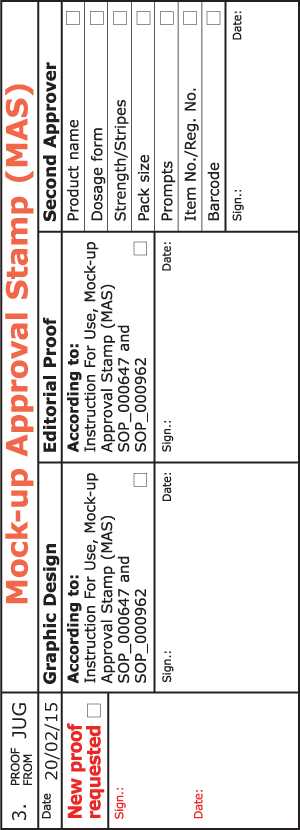Innohep 10 000 Iu/Ml

ARTWORK
Please return to:
LEO Pharma A/S Internal Market Access Industriparken 55 - DK-2750 - Ballerup
|
Scale |
Get-up |
Item No. |
Rev. No. |
Sent by e-mail |
|
100% |
GB |
031278 |
XX |
T |
|
Subject INS 120 x 320 mm |
Date 16/02/15 |
Date | ||
|
Colour Black |
Sign. JUG |
Sign. | ||
Sign.
Date
Supplier / Place of production
Denmark

Preparation
Strength innohep 10,000 IU/ml vials
Comments:
_Page 1 of 2 Font size: Heading: 10 point, section: 9 point, linespacing: 3 mm Mock-up for registration purpose.
-120 mm-►
A
E
E
A
Package leaflet: Information for the user
10,000 IU/ml
tinzaparin sodium
Read all of this leaflet carefully before you start using this medicine because it contains important information for you.
• Keep this leaflet. You may need to read it again.
• If you have any further questions, ask your doctor, pharmacist or nurse.
• This medicine has been prescribed for you only. Do not pass it on to others. It may harm them, even if their signs of illness are the same as yours.
• If you get any side effects, talk to your doctor, pharmacist or nurse. This includes any possible side effects not listed in this leaflet. See section 4.
• In this leaflet innohep 10,000 IU/ml will be called innohep.
What is in this leaflet
1. What innohep® is and what it is used for
2. What you need to know before you use innohep®
3. How to use innohep®
4. Possible side effects
5. How to store innohep®
6. Contents of the pack and other information
1. What innohep® is and what it is used for
innohep is a type of heparin - a low molecular weight heparin - and belongs to a group of medicines called anticoagulants; these medicines affect how your blood clots. innohep prevents clotting, allowing normal blood flow through the arteries and veins.
innohep is used in adults to help stop:
• Harmful blood clots forming in your veins following an operation. An example is a clot in a deep vein (deep vein thrombosis, DVT). This usually occurs in a leg.
• Harmful blood clots forming in the tubing of an artificial kidney machine during kidney dialysis (haemodialysis).
2. What you need to know before you use innohep®
Do not use innohep
• If you are allergic (hypersensitive) to tinzaparin or any of the other ingredients of this medicine; you can find a list of ingredients in section 6 of this leaflet.
• If you have ever had a reaction to heparin that caused a severe drop in the number of your clotting cells (platelets) - this reaction is called heparin-induced thrombocytopenia (HIT).
• If you have ever had a major bleed (for instance: in the brain, spine, eye or stomach, into a muscle or the womb, or any conditions which make you bleed severely, such as haemophilia).
• If you have a condition called septic endocarditis (an inflammation of the lining of the heart and heart valves).
2 Do not give this medicine to a premature baby, a newborn baby or a baby up to 1 month old as it contains benzyl alcohol (see “Important information about some of the ingredients of innohep" below).
The use of innohep vials should be avoided if you are pregnant or think you may be pregnant due to the presence of benzyl alcohol. (see “Pregnancy and breast-feeding")
Warnings and precautions
Important: If you are having an epidural/spinal anaesthetic
Your doctor will decide if you can have an epidural/spinal anaesthetic if you are using innohep.
You must wait 12 hours after your last injection of innohep before having a lumbar puncture or epidural/spinal anaesthetic placed.
You must wait at least 4 hours after having a spinal anaesthetic, or after the catheter has been removed, before you start using innohep again.
If you have an anaesthetic your doctor or nurse will make regular checks. This is to check if you are getting any major bleeding or bruising around your spine. This may cause paralysis that could be permanent. Any signs this may be happening to you include tingling, weakness or numbness in your lower legs or body, back pain or problems in going to the toilet. This happens very rarely.
You may have a blood test before you start using this medicine and at intervals while you are using it; this is to check the level of the clotting cells (platelets) and potassium in your blood.
Do not inject innohep into a muscle. See section 3, “How to use innohep®".
This medicine may make you bleed more easily, so when you are being given other injections or having any procedures carried out, tell the doctor, nurse or dentist that you are using innohep.
Talk to your doctor, pharmacist or nurse before using innohep
• If you are pregnant, or think you may be pregnant. See the section “Pregnancy and breast-feeding".
• If you have a condition which makes you more likely to bleed.
• If you are being treated with any other injections into your muscles.
• If you are allergic (hypersensitive) to heparin.
• If you are allergic to other low molecular weight heparins, such as enoxaparin or dalteparin.
• If you have any medical condition such as diabetes mellitus or metabolic acidosis which may cause high levels of potassium in your blood (hyperkalaemia).
• If you have an artificial heart valve.
• If you have kidney problems.
innohep should not be interchanged with other low molecular weight heparin products. This is because they are not exactly the same and you could experience problems with your blood clotting.
Elderly people
Because kidney problems are more likely if you are elderly, you may have a blood test to check how well your kidneys are working and to monitor the activity of innohep.
Children and adolescents
innohep is not intended for use in children and adolescents under the age of 18 years.
Other medicines and innohep
Tell your doctor or pharmacist if you are taking, have recently taken or might take any other medicines. This includes any medicines bought without a prescription.
You must tell your doctor or pharmacist if you are taking any of the following medicines as you may be likely to bleed more easily:
• Non-steroidal anti-inflammatory drugs (such as ibuprofen or diclofenac): for arthritis or aches or pains.
• Aspirin: either for reducing pain and inflammation, or the lower dose for thinning of the blood.
• Platelet aggregation inhibitors (such as clopidogrel): for stopping harmful blood clots forming.
• Thrombolytic agents (such as streptokinase): for dissolving blood clots.
• Vitamin K antagonists (such as warfarin): for stopping harmful blood clots.
• Activated protein C: for getting rid of blood clots
• Anticoagulation, taken by mouth (such as rivaroxaban, dabigatran or apixaban): for stopping harmful blood clots.
Pregnancy and breast-feeding
If you are pregnant or breast-feeding, think you may be pregnant or are planning to have a baby, ask your doctor, pharmacist or midwife for advice before using this medicine.
The use of innohep vials should be avoided if you are pregnant or think you are pregnant due to the presence of benzyl alcohol. Your doctor will prescribe a different formulation of innohep.
Special precautions are required if you will have an epidural anaesthetic to help you with your labour when you are using innohep.
(See "Warnings and Precautions").
Driving and using machines
This medicine should not have any effect on your ability to drive or use machines. However, you should check with your doctor if you feel any side effect that may stop you from driving or using machines.
E
E
o
fM
ro

|
Scale |
Get-up |
Item No. |
Rev. No. |
Sent by e-mail |
|
100% |
GB |
031278 |
XX |
T |
|
Subject INS 120 x 320 mm |
Date 16/02/15 |
Date | ||
|
Colour Black |
Sign. JUG |
Sign. | ||
Sign.
Date

ARTWORK
Please return to:
LEO Pharma A/S Internal Market Access Industriparken 55 - DK-2750 - Ballerup
Preparation
Strength innohep 10,000 IU/ml vials
Comments:
_Page 2 of 2_
-120 mm-►
Supplier / Place of production
Denmark

E
E
Important information about some of the ingredients of innohep
innohep vial contains:
• Benzyl alcohol. This is a preservative. It may cause toxic and allergic reactions in infants up to 3 years old. It must not be used in premature babies or babies up to 1 month old. It is recommended to use the innohep formulation without benzyl alcohol in pregnant women. Your medicine contains
10 mg/ml of benzyl alcohol.
• Sodium. This medicine is nearly “sodium free". Your medicine contains less than 23 milligrams (mg) of sodium per dose.
Please ask your doctor or pharmacist if you are worried about any of the ingredients in this medicine.
3. How to use innohep®
innohep will be given to you by your doctor or your nurse. innohep should not be mixed with any other injection.
How much innohep to use
Adults, including the elderly:
To prevent harmful blood clots forming in the tubing of an artificial kidney machine during kidney dialysis (haemodialysis)
innohep will be given either into the artificial kidney machine or into your vein.
The usual dose depends on the length of dialysis.
To prevent harmful blood clots forming in your veins after an operation
innohep will be given under your skin.
The usual dose depends on the type of operation you are having.
You will have one dose of innohep before your operation. Then usually you will have one dose of innohep once a day for 7 to 10 days afterwards.
Your doctor will decide how long you should use innohep.
Use in children and adolescents
There is limited experience of use in children and adolescents. innohep is not intended for use in children and adolescents under the age of 18 years.
If you use more innohep than you should
If you feel unwell or think you may have been given too much, tell your doctor or nurse straight away because you may start to haemorrhage (bleed severely) and need to be given another injection of a medicine called protamine sulphate to stop you bleeding.
If you have missed a dose of innohep
If you think that you have missed a dose, it is important that you talk to your doctor or nurse as soon as you remember and get advice on what to do.
4. Possible side effects
Like all medicines, this medicine can cause side effects, although not everybody gets them. The side effects most often reported are blood problems and skin reactions, especially where your injection has been given.
make the skin pale and cause weakness and breathlessness.
• A pooling of blood in tissues which may result in the skin appearing dark in colour, similar to a large bruise.
• Pain, itching, bruising or bleeding, redness, swelling, nodules or hard lumps under your skin where the injection was given.
Uncommon side effects (may affect up to 1 in 100
people)
• Changes in your blood test results. There may be a change in the clotting cells (platelets) in your blood. These tests will return to normal after innohep is stopped.
• An allergic reaction. You may be sensitive to one of the ingredients in this medicine.
• Bruising, red or purple spots under your skin.
• Some blood tests may also show a change in the way your liver is working. These tests will return to normal when innohep is stopped.
• An itchy red rash with heat and swelling on your skin (dermatitis).
• Rash.
• Itchy skin.
Rare side effects (may affect up to 1 in 1000 people)
• Your blood may form more harmful clots. A drop in the number of clotting cells (platelets) in your blood may give you these symptoms. Your doctor can explain this more.
• Changes in your blood test results. The amount of potassium may be increased. This is more likely to happen if you have severe kidney problems or diabetes. Your doctor can explain this more.
• Hives.
• Your bones may weaken and break more easily. This is known as osteoporosis and has been seen in patients using heparin for a long time.
• Prolonged, painful erections in men.
Paediatric population
Limited information derived from one study and postmarketing data indicates that the pattern of adverse reactions in children and adolescents is comparable to that in adults.
Reporting of side effects
If you get any side effects, talk to your doctor, pharmacist or nurse. This includes any possible side effects not listed in this leaflet. You can also report side effects directly via the Yellow Card Scheme at: www.mhra.gov.uk/yellowcard.
By reporting side effects you can help provide more information on the safety of this medicine.
5. How to store innohep®
• Keep this medicine out of the sight and reach of children.
• Do not use this medicine after the expiry date which is stated on the label (EXP). The expiry date is the last day of that month. Any contents remaining in the vial 14 days after first opening should be discarded.
• Do not store above 25°C.
E
E
o
fM
ro
Important side effects to look out for:
You must get urgent medical help if you have any of the following symptoms. You may be having a serious allergic reaction. These are rare (may affect up to 1 in 1000 people).
• You have difficulty breathing.
• Your face or throat swell.
• Your skin develops a severe rash.
• You experience blistering of the skin, mouth, eyes or genitals or your skin peels.
• Blood spots near the injection site which could develop into a purple blister surrounded by red inflamed skin.
You must get urgent medical help if you have any of the following symptoms after having an epidural or spinal anaesthetic. You may be developing paralysis:
• Tingling, weakness or numbness in your legs or lower body.
• Back pain.
• Problems in going to the toilet.
You should tell your doctor straight away if you spot any of the following signs which mean you may be starting to bleed severely:
• Red or brown urine.
• Black tarry stools.
• Unusual bruising.
• Bleeding from your nose, or mouth or any operation wound that will not stop.
Common side effects (may affect up to 1 in 10 people)
• Bleeding (haemorrhage).
• Anaemia. Reduction in red blood cells which can
Do not throw away any medicines via wastewater or household waste. Ask your pharmacist how to throw away medicines you no longer use. These measures will help protect the environment.
6. Contents of the pack and other information What innohep contains
• The active substance is tinzaparin sodium.
• Each vial contains 20,000 IU of tinzaparin sodium in 2 millilitres (ml) of solution.
• The other ingredients are benzyl alcohol, sodium acetate, sodium hydroxide and water for injections.
You can find important information about some of the ingredients near the end of section 2, just before section 3.
What innohep looks like and contents of the pack
innohep is a straw coloured liquid. innohep comes in a glass vial containing 2 ml.
There are 1, 2, 5 or 10 vials in a carton.
Not all pack sizes may be marketed.
Marketing Authorisation Holder and Manufacturer Marketing Authorisation Holder: LEO Laboratories Limited, Hurley, Berkshire SL6 6RJ, UK. Manufacturer: LEO Pharma A/S, 55 Industriparken, DK 2750, Ballerup, Denmark.
This leaflet was last revised in February 2015.
® Registered Trade Mark

V